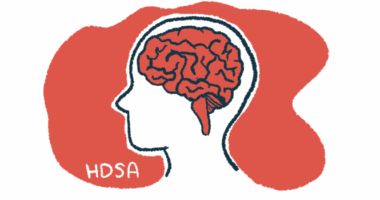UniQure Presents More Data Supporting the Effectiveness of Gene Therapy Candidate AMT-130

New preclinical data continues to support uniQure’s AMT-130 investigational gene therapy for Huntington’s disease.
Results reveal the therapy lowered the levels of toxic huntingtin protein in nerve cells derived from Huntington’s patients as well as in mouse, mini-pig and non-human primate models of the disease.
The results were shared recently in four presentations at the 15th Annual CHDI Huntington’s disease Therapeutics Conference, Feb. 24–27 in Palm Springs, California.
Huntington’s symptoms stem from a selective degeneration of certain regions of the brain, particularly two: the basal ganglia, a region deep in the brain that’s responsible for functions that include movement coordination; and the cortex, the outer layer of the brain that plays a key role in controlling thought, behavior, and memory.
AMT-130 is an experimental gene therapy that works by inhibiting the production of the mutated forms of the huntingtin (mHTT) protein, the underlying cause of Huntington’s disease.
The therapy is composed of a small portion of synthetic genetic material called microRNA, that, once inside the cell, binds to and destroys the molecule carrying the genetic information for the production of the huntingtin protein. As a result, AMT-130 decreases production of the abnormal mHTT protein.
Notably, microRNAs are tiny RNA molecules that control the expression of several genes; gene expression is the process by which information in a gene is synthesized to create a working product, such as a protein.
The therapy has shown promising results in preclinical studies and has been granted orphan drug status and fast track designation by the U.S. Food and Drug Administration (FDA).
In the oral presentation, “Translatable biomarkers in gene therapy for Huntington Disease: learnings from pre-clinical studies,” Astrid Vallès-Sánchez, PhD, presented data on a mini-pig model of Huntington’s disease.
Mini-pigs have bigger brains than mice; as such, they are a more robust model to assess the distribution of AMT-130 and its effectiveness in the context of Huntington’s disease.
AMT-130 was administered as a single dose into a brain region called the striatum (involved in motor control), particularly in two areas known as the caudate and putamen, commonly affected by the disease. The infusion of AMT-130 was done using MRI-guided convention-enhanced delivery (CED).
Analysis of the mini-pig’s brain at six- and 12-months following AMT-130 administration showed the therapy was extensively distributed and the gene widely expressed throughout the brain. Importantly, AMT-130 led to a significant reduction in the levels of mHTT.
At 12 months, the regions showing the most marked decrease in mHTT protein were the putament (85%), caudate (80%) and a region called amygdala (78%), which is responsible for the perception of emotions. Additional regions that showed a lowering of mHTT included the thalamus (56%) and cerebral cortex (44%).
Researchers are continuing to monitor these animals. A follow-up analysis at two years showed that after a single administration of AMT-130, the levels of mHTT protein in the cerebrospinal fluid (CSF, the fluid surrounding the brain and spinal cord) decreased up to 30%. However, these values are lower than those observed in the different brain regions and do not accurately reflect mHTT lowering in brain tissue.
In two science posters, titled “Lowering the Pathogenic Exon 1 HTT Fragment by AAV5-miHTT Gene Therapy” and “Exploring the Effects of Intrastriatal AAV5-miHTT Lowering Therapy on Neuronal Function, MRS Signal and Mutant Huntingtin Levels in the Q175FDN Mouse Model of Huntington’s disease” researchers used a mouse model of Huntington’s (Q175FDN) to further assess AMT-130’s effectiveness.
The team evaluated whether AMT-130 also targeted the aberrant production of exon 1 HTT protein, a shorter but very toxic form of mHTT.
Mice treated with AMT-130 experienced a dose-dependent lowering of exon 1 HTT mRNA in both the striatum and cortex. The treatment also resulted in a decrease of the full-length HTT mRNA. The decrease in mRNA molecules correlated with the levels of AMT-130 in the brain.
The team also assessed the levels of N-acetyl aspartate (NAA), a marker of neuronal health, after animals were treated with a high dose of AMT-130.
Using a technique called magnetic resonance spectroscopy, a non-invasive method to analyze metabolic changes in the brain and other tissues, researchers observed that high dose AMT-130 was able to restore NAA levels three months after treatment.
These animals showed volume loss in multiple brain regions at six months of age, with high dose AMT-130 significantly preventing hippocampal volume loss. (The hippocampus is an area of the brain that is key in memory.)
In the scientific poster, “Secreted Therapeutics: Monitoring Durability of microRNA-based Gene Therapies in Huntington’s disease,” researchers assessed whether AMT-130 was present in vesicles released by cells, called extracellular vesicles (EVs).
EVs are known for their capacity to carry proteins, DNA and RNA molecules, including microRNAs. They are increasingly recognized as potential biomarkers for diagnosis, but also to assess the movement of a compound into, through, and out of the body (pharmacokinetics).
The team used induced pluripotent stem cells (iPSC) of Huntington’s patients to generate neurons. Of note, IPSCs are derived from either skin or blood cells that have been reprogrammed back into a stem cell-like state, which allows for the development of an unlimited source of almost any type of human cell.
AMT-130 treated iPSC-derived neurons released EVs filled with microRNA targeting huntingtin (miHTT) in a dose-dependent manner. The therapy also lowered the levels of mHTT.
Additionally, a single administration of AMT-130 into the striatum of non-human primates resulted in the widespread distribution of therapeutic miHTT molecules in both the striatum and cortex. Six months later, miHTTmolecules also were present in the CSF.
“Our data presentations at CHDI illustrate the increasing potential of AMT-130 to target the highly toxic exon 1 protein fragment, achieve broad vector biodistribution across several animal species and show meaningful activity using the presence of extracellular vesicles as a potential biomarker,” Sander van Deventer, MD, PhD, said in a press release. Van Deventer is executive vice president, research & product development, at uniQure.
“In addition, we highlight the use of magnetic resonance spectroscopy as a potentially important imaging biomarker to measure the restoration of target tissue. Collectively, these findings represent a robust package of new preclinical data to better inform how researchers and clinicians pursue a much-needed treatment for this devastating disease,” he said.






